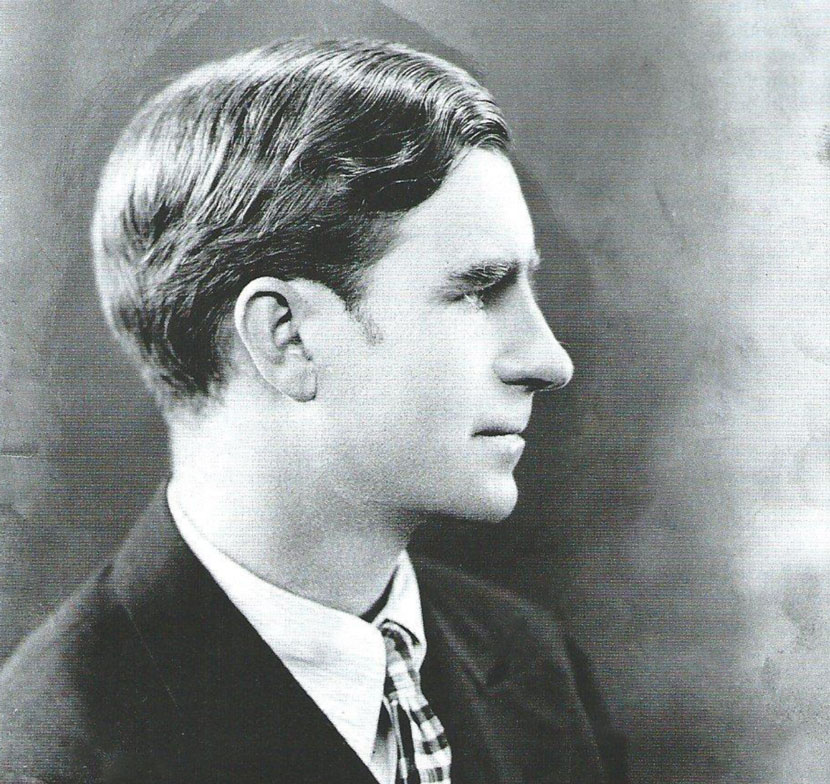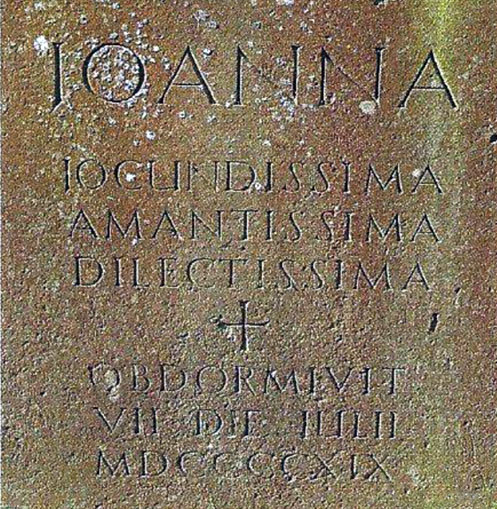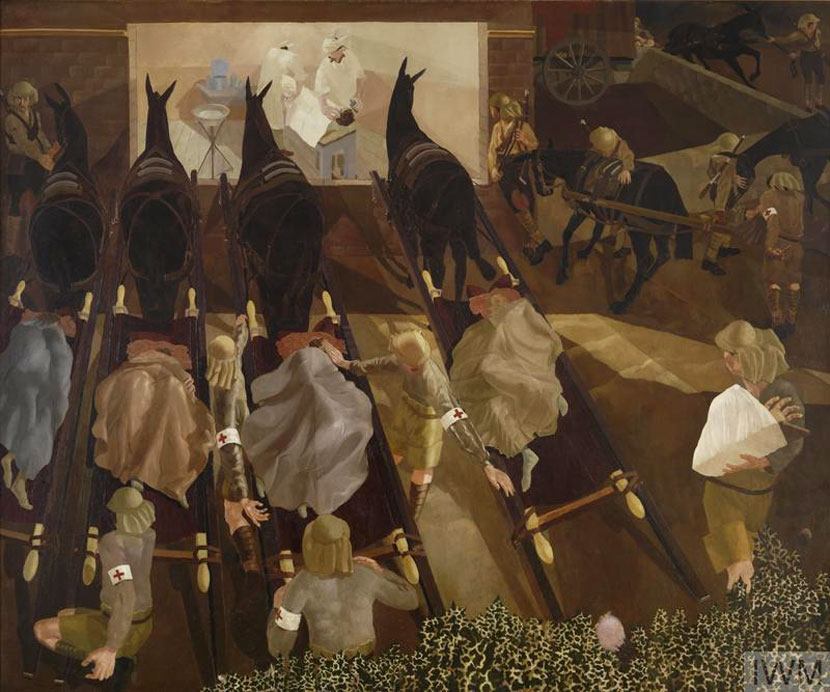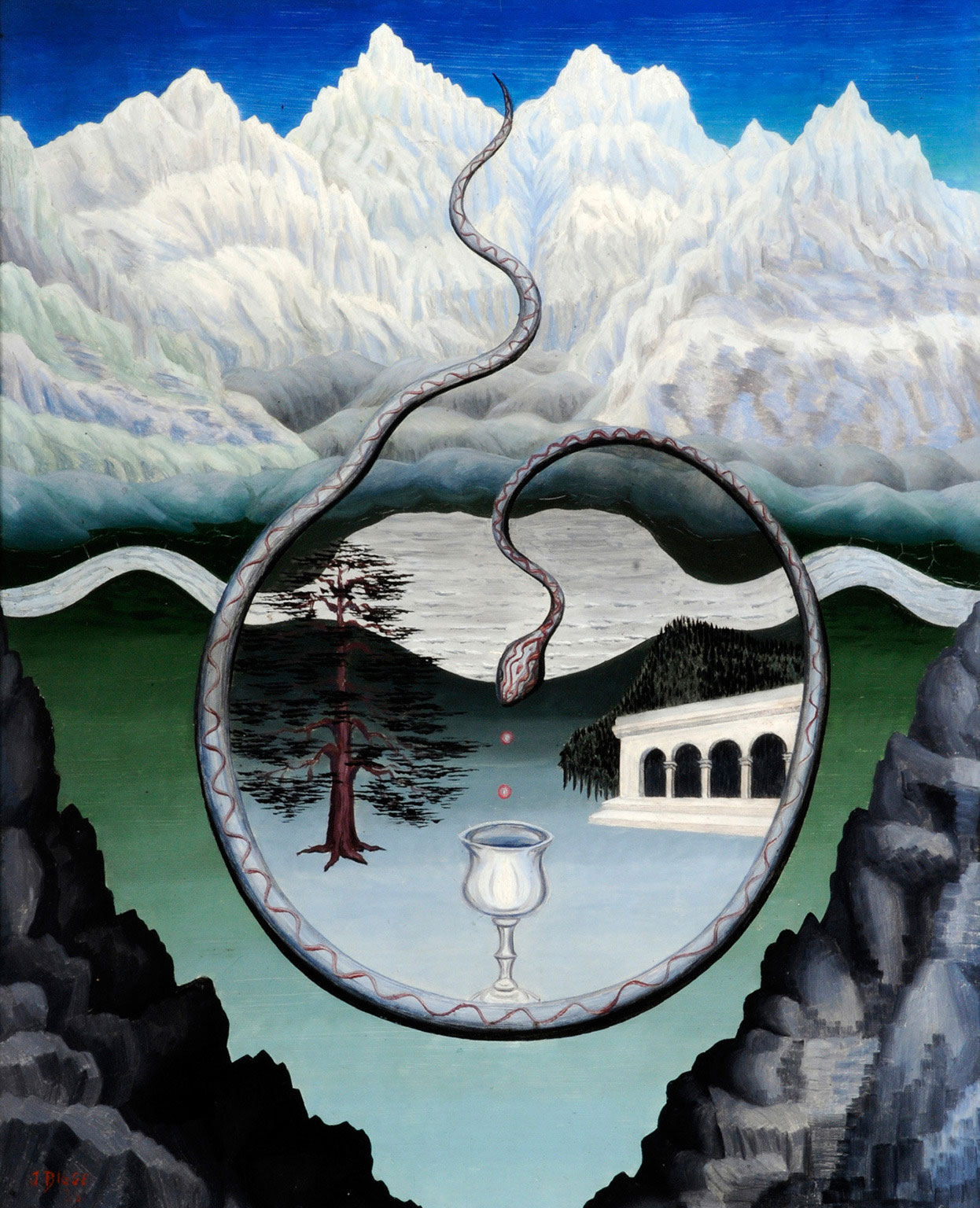

This page is adapted from an article by art historian and King’s Sutton resident Roger Neill, in which he celebrates the life and work of ‘forgotten’ Surrealist artist, soldier and chicken-farmer, John Selby-Bigge. Roger’s article originally appeared in the May 2014 issue of the Oxford Times’ Oxfordshire Limited Edition supplement.
 |
| John Selby-Bigge photographed in 1933 |
In the cemetery at the village of King’s Sutton there is a gravestone for a small child. This stone is for Joanna Annabella Lewis Selby-Bigge. She died in July 1919 aged just four, perhaps a consequence of the ‘Spanish Flu’ epidemic.
The inscription records in Latin the awful loss borne by her parents:
]ocundissima
Dilectissima
Amantissima
...most joyful, most delectable, most loving.
It was noticing this intriguing message from the past that piqued my curiosity. Who were Joanna Selby-Bigge and her parents? I had no idea that the results should be so fascinating.
They lived in King’s Sutton on the Northamptonshire-Oxfordshire border. Before the First World War, her father, John Selby-Bigge, had earned a living there as a chicken farmer and part-time artist. Now substantially forgotten, John was born in Oxford in 1892, where his father, Amherst Selby-Bigge was working as a fellow and lecturer in philosophy at University College.
In 1902 Amherst joined the Board of Education, where his career as a civil servant grew steadily until he became Permanent Secretary. Perhaps his greatest achievement in this role was the 1918 Education Act, which made school attendance compulsory for children up to the age of 14. He wrote several books on philosophy and education and was rewarded for his life’s work with a baronetcy in 1919. A pillar of the establishment.
 |
| Joanna Selby-Bigge’s gravestone |
In the early years of the 20th century, the Selby·Bigge family lived at the Manor in King’s Sutton (and at 7 Wilbraham Place, near Sloane Square in London), the baronetcy being named after the village. But in 1919 Sir Amherst purchased the Manor House at the village of Kingston, near Lewes in East Sussex, where he was to farm in retirement.
After school at Winchester College (where he was a scholar), John had a spell at Christ Church, Oxford, which he abandoned in 1912, adopting a ‘gypsy’ lifestyle and, according to his unpublished memoirs, rejecting the ‘banalities of the sophisticated world’. In 1913 aged 21, he enrolled at the Slade School of Fine Art in London, which is where he met and married another art student, Joanna’s mother, Rachel Ruth Humphries. Ruth was a member of the family who ran the Lund Humphries art printing and publishing business in Bradford.
It is unclear to me how or why, during the First World War, John found himself an Inspector of Muleteers for the Macedonian Mule Corps in Greece. He appears to have joined the Army Service Corps (which became Royal in 1918) as a Lieutenant in 1914. The Mule Corps was formed in October 1915 because the British Army, fighting the Bulgarians in Salonika, short of drivers and vehicles, and in difficult mountainous terrain, needed to establish better ways of resupplying the troops and operating field ambulance activities.
Over a three-year period, some 13,000 men were recruited as muleteers, many of them from Cyprus, supporting an allied army at that now forgotten front in excess of 700,000. At the end of that war he was seconded to work in Intelligence in Salonika and Athens.
Through Ruth’s friendships at the Slade, mainly with members of the Bloomsbury group, John came to know a number of artists and writers who went on to become prominent. Among these were the economist John Maynard Keynes, the artists Dora Carrington and Dorothy Brett, and the writer Lytton Strachey, who wrote in July 1918 to Carrington (a close friend of Ruth), describing a dinner with the young Selby·Bigges:
’A good deal came to light in the course of it – about him, I mean: and his state of mind – the change from what he used to be, etc – became explicable. He had evidently been crushed flat by the war – not its worst horrors, but the stupidity of everyone he was with, and the appalling dullness of existence… I thought he was really one of the most truly good people I had ever met.’ Strachey was evidently attracted to John, referring to the Selby-Bigges in an earlier letter to Carrington as ‘Ruth and her fair Boy’.
 |
| Travoys for Wounded Soldiers in Macedonia by Stanley Spencer 1916 |
Immediately after the war, John returned to England and chicken farming in King’s Sutton, but he also worked as a catalogue designer at the London office of his wife’s family’s firm, and later took a job at the Ashmolean Museum in Oxford, ‘cataloguing some of the pictures and prints, dusting priceless china and illustrating by hand the new acquisitions in the museum catalogue’. His wife Ruth ran an art class in Oxford and a second daughter, Lydia, was born in 1920. Two more children followed – Cornelia and Mary.
Early in the 1920s the family moved to farm at Chiddingly near Eastbourne – a ‘vast chicken farm’, according to Dora Carrington, 'producing 300 dozen eggs every week’ from 3,000 hens. He did battle, unsuccessfully it seems, with the local foxes. No matter how many nights he spent out ‘watching’, it was no use. Sooner or later the foxes won.
In 1923, the Selby·Bigges gave up the rural life, returning to live at Ladbroke Grove in London, where John took up estate agency, painting in his spare time. In the late 1920s, profoundly influenced by an exhibition of the Greek-born Italian artist Giorgio de Chirico at Tooth’s Gallery in London, he became an active member of the Surrealist group of artists in Britain, always known in his artistic capacity as plain John Bigge.
His closest friendship throughout this period was with another British Surrealist, Edward Wadsworth, whom he had first met through his wife at the Slade. His first solo exhibition was at the Wertheim Gallery in London in 1931. He then had a solo show at Galerie Vignon in Paris in 1932.
 |
| Tyrolean Dreams by John Bigge(1935, The Sherwin Collection) |
The following year he became a founding member of the influential Unit One group of Surrealists, members including the painters Paul Nash, Ben Nicholson, Edward Wadsworth, John Armstrong, Edward Burra and Frances Hodgkins, the sculptors Henry Moore and Barbara Hepworth. the architects Wells Coates and Colin Lucas and the writer Herbert Read. Frances Hodgkins left the group quite early, replaced by another painter Tristram Hillier (who was also to become a close friend of John). Read in 1934 edited a kind of manifesto for the group, Unit 1: the modern movement in English architecture, painting and sculpture.
For Bigge, although criticism of the group’s show was favourable, sales were scarce. Shortly after Unit One’s exhibition, John had another one-man show at the Lefevre Gallery in London.‘My pictures were all abstract, rather dull and badly hung,’ John wailed in his memoirs. .
From 1936 John lived variously in Austria, France, Portugal and Spain. At some point his marriage to Ruth foundered and he married a second time, to his ‘Viennese Marija’.
During the Second World War, John Selby-Bigge worked initially as a sub-editor with the BBC’s European News Service, but in 1945, at the cessation of hostilities, he became deeply involved in humanitarian work as Assistant Commissioner for Civilian Relief with the British Red Cross in Austria. In this role he has been credited with saving thousands of lives of anti-communist Slovenian civilians, who had been ordered by the British Military Government in Austria to be sent back to Yugoslavia, where Tito’s newly-founded Communist regime was systematically torturing and executing returned refugees.
The order that was issued by the British Military Government said that ‘all Yugoslav nationals at present in the Corps area will be handed over to Tito forces as soon as possible,’ and it continued: ‘These forces will be disarmed immediately but will NOT be told of their destination.’ Not only did the British military follow this order, returning some 10,000 Slovenes, but, in carrying out the instruction, the Slovenes were told by the British that they were being sent to a new camp in Italy, when in reality they were being returned directly to Tito’s regime and certain death – a deliberate lie.
Very few of the British officers involved in the deception ever owned up to it, a significant exception being a young captain in the Grenadier Guards – later writer, publisher and MP, Nigel Nicolson – who described the forcible repatriations as "three weeks that should live in infamy... one of the most disgraceful operations British soldiers have ever been ordered to undertake.’'
John Selby-Bigge had been involved for several months with the British Red Cross in Italy before being transferred to Austria. When he arrived at the refugee camp, 10,000 Slovenes in military uniform had already been repatriated (and slaughtered). Now it was the turn of the remaining Slovene civilians – some 6,000 of them. Selby-Bigge quickly understood the situation and decided that the operation should be stopped immediately.
One of his co-workers, John Corsellis, has written: "John Selby-Bigge’s orthodox background and unorthodox career gave him self-confidence, style and a mind of his own, and meant he also was not overawed by the military establishment but handled them with great tact and skill... while three years of active army service as an officer with marked linguistic skills, latterly as acting captain, in Macedonia in the First World War enabled him to negotiate with the military during the Second World War on close to equal terms."
In effect, what Selby-Bigge did was to have one-to-one meetings with the two senior British generals, telling them that he was not going to allow the order to be carried out, and persuading both that the order needed to be rescinded – which it was, saving all the civilian Slovene lives. The facts about this whole episode were concealed from the public for 40 years – until the publication of The Minister and the Massacres by Count Nicolai Tolstoy in 1986. And in a later book, A Looking-Glass Tragedy, Christopher Booker suggests that the main effect of Selby-Bigge’s interventions was in saving the lives of hundreds, if not thousands, of displaced Cossacks and other anti-Communist Russians.
However, in spite of the decades of secrecy surrounding these events in Austria, John was nevertheless made an OBE in the New Year’s Honours List in 1946. He became the second baronet of King’s Sutton on the death of his father in 1951, wrote (still) unpublished memoirs, and died at Le Bugue in the Dordogne in 1973. The baronetcy lapsed on his death.
John Bigge’s work, all in the artistic space between Surrealism and Abstraction, can be found in the following public collections in Britain: Tate (London), Southampton, Wolverhampton, Leeds, Middlesbrough and Ferens (Hull). Outside the UK, John Bigge’s work can be found in the Art Gallery of Ontario in Toronto and the Israel Museum in Jerusalem.
In 2014, he was included in a major exhibition of the Sherwin Collection at the Abbot Hall Art Gallery in Cumbria, British Surrealism Unlocked. In the catalogue for that show, Jeffrey Sherwin has written: ‘Selby-Bigge found inspiration in the realms of dreams and the sub-conscious mind, and his landscapes and seascapes are considered among the most effective of any artist associated with the British Surrealist movement.’